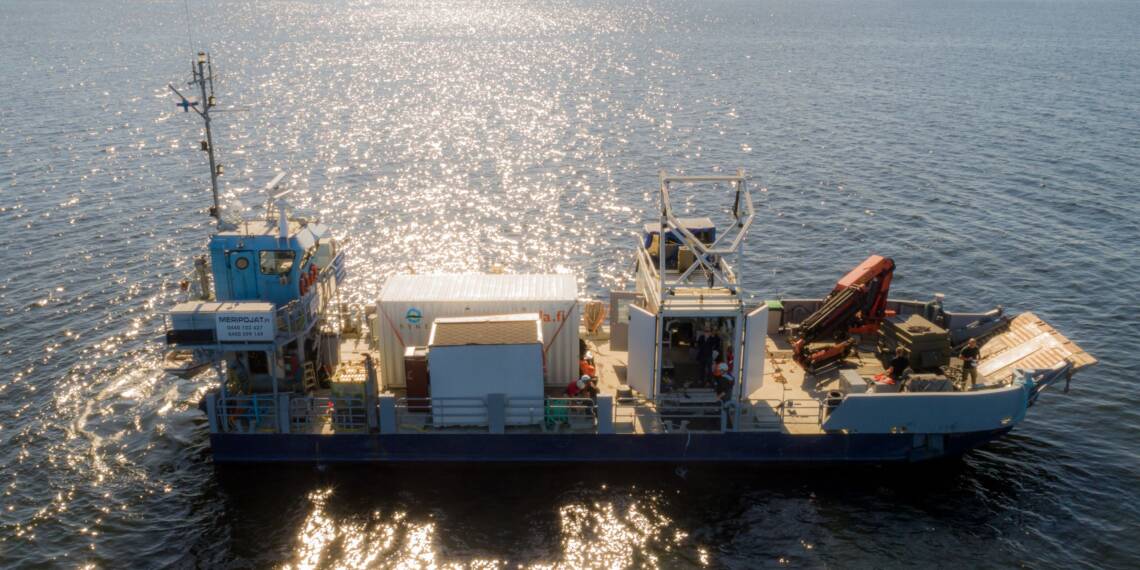
Research vessels and boats collect samples and make observations on the state of the sea and the marine environment
Research vessels and boats are traditional aids for marine research. They have travelled the sea, making observations and taking samples for well over a century. The first vessel specifically built for marine research, i.e. the steamship Nautilus was built at the beginning of the 20th century.
The current flagship of Finnish marine research, i.e. the research vessel Aranda, makes research expeditions trips to the Baltic Sea all year round. There is a wide variety of marine scientists working onboard, from marine geologists and archaeologists to water chemists and ecologists. There is also a lot of research boats in use closer to the coastline.
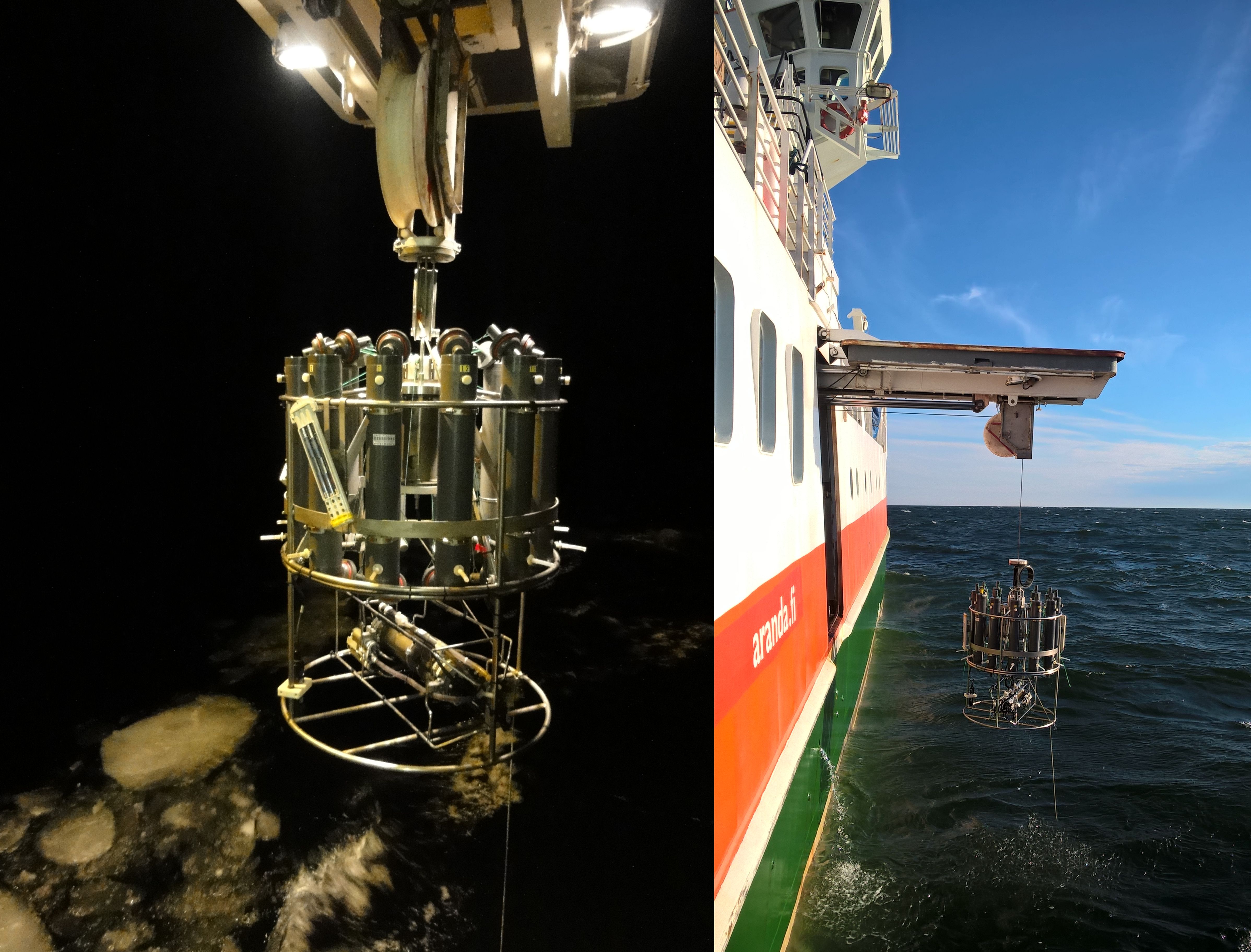
Water quality and phytoplankton are monitored from water samples
The most common task at sea is to take water samples. The instrument used is a so-called tube sampler, which can be used to take samples from any desired depth. Water quality is monitored by collecting water samples from more than 150 observation stations. Although these stations are usually visited twice a year, visits may occur from 5 to17 times annually at 15 intensively sampled sites.
-
Find out more
Algal bloom monitoring
Plankton algae, or phytoplankton, can also be studied from water samples. Phytoplankton is an important research subject because the species composition of plankton is a great indicator of the status of the sea. Samples are taken from the sea surface layers from different depths down to 10 metres. They are then mixed into an aggregate sample which is preserved for later examination.
Phytoplankton samples are collected from about 100 sites at least once or twice a year, with more frequent sampling occurring close to the coastline. Because the species varies with the seasons, samples must always be taken at the same time of the year so that they are comparable.
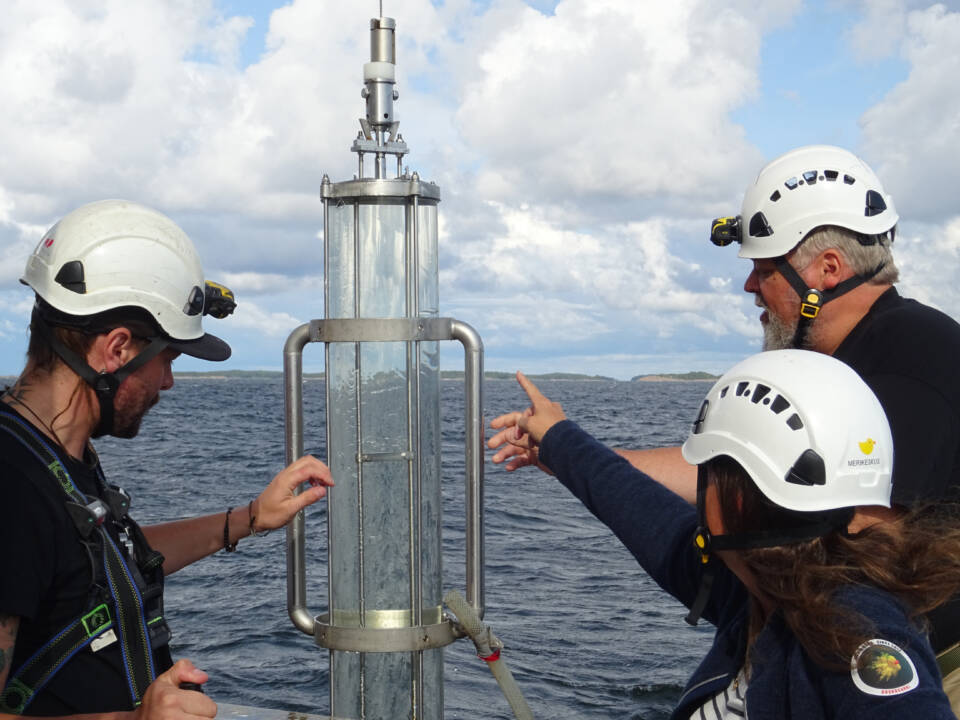
Plankton information is also collected by nets and photography
Phytoplankton can also be captured with special nets with a mesh size of only ten micrometres. Using this method, rare, large-sized species are found which do not always occur in water samples.
Zooplankton is also collected by netting. The mesh size of such nets is one hundred micrometres or ten times larger than that used to capture phytoplankton. There are a few dozen monitoring stations for zooplankton and samples are usually taken at the beginning and end of summer.

New technology in plankton research is represented by the Imaging FlowCytobot imaging device, which automatically produces up to 30,000 accurate black and white photographs of phytoplankton cells per hour. When used continuously on a research ship, frequent information is obtained about the plankton community along the vessel’s route. Similar devices also exist for the detection of zooplankton.
Gulf samplers are used to search for juvenile fish
The Gulf sampler is a funny looking device. It resembles a bottomless zinc bucket with a bag-like net attached to the top. During sampling, this device is pulled horizontally with the bottom of the bucket foremost at the desired depth beside the boat. There are usually two samplers, one on each side of the boat. Fish juveniles drift into the netting and from there into the collection jar.
Net samplers like the Gulf sampler are used to map the occurrence and abundance of herring, perch, and pike-perch juveniles. The fry of these species spread into open water shortly after hatching. Catches of fish larvae must occur within a short time window of only one to two weeks around the correct time.
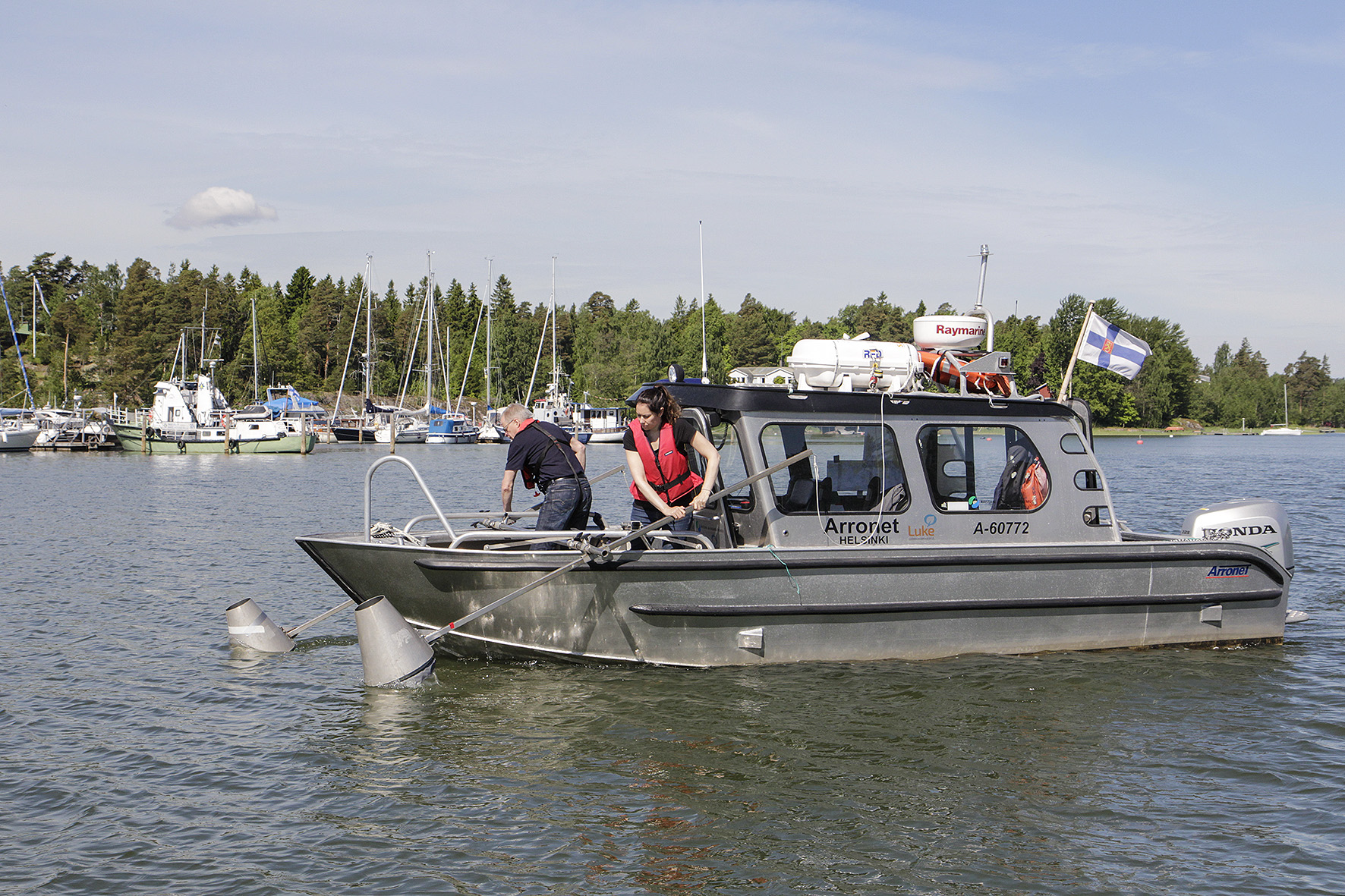
Benthic animals are retrieved with a grab sampler
Benthic animals may also be sampled from research vessels. Large marine exploration vessels are equipped with large, double-bucket grabs, which are lifted by winch. In smaller boats, the otherwise similar grabs tend to be smaller and are manually-operated. Benthic grabs usually consist of double buckets, and when they close, they bite a piece out of the bottom sediments.
Once the bottom sample has been lifted to the surface, it is placed on a sieve from which the sediment is rinsed off with water. The bottom animals remaining on the screen are collected in sample jars. This job requires a careful hand as some animals are fast-moving and can escape easily.
-
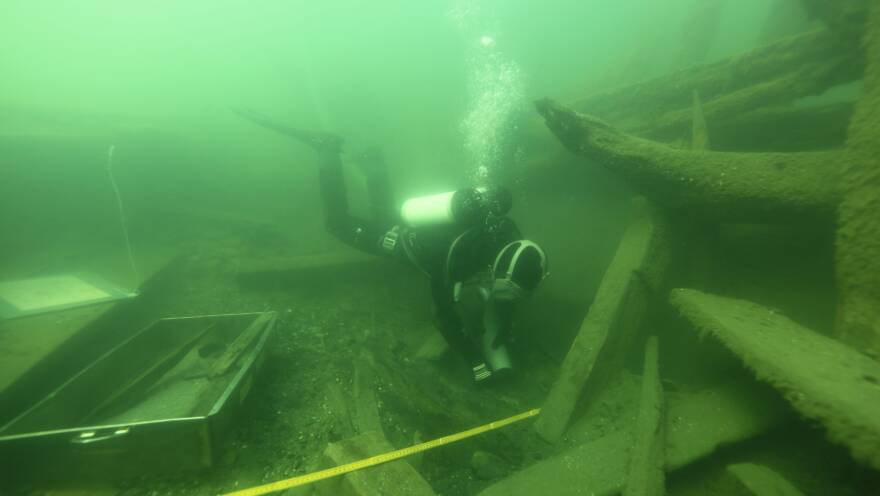 Find out more
Find out moreDiving and snorkeling
This method has another disadvantage: it provides only a small glimpse of an area’s seabed habitats and their species. Better results are obtained when diving for samples. Not only can samples for soft sediments be taken, they can also be collected by scraping the biota from rock surfaces.
Technology gives a view under the surface
Research vessels also include sonar and video cameras designed for underwater use. They collect a wide range of information for marine ecology, marine geology, and marine archaeology. Underwater microphones, or hydrophones, can measure underwater noise.
-
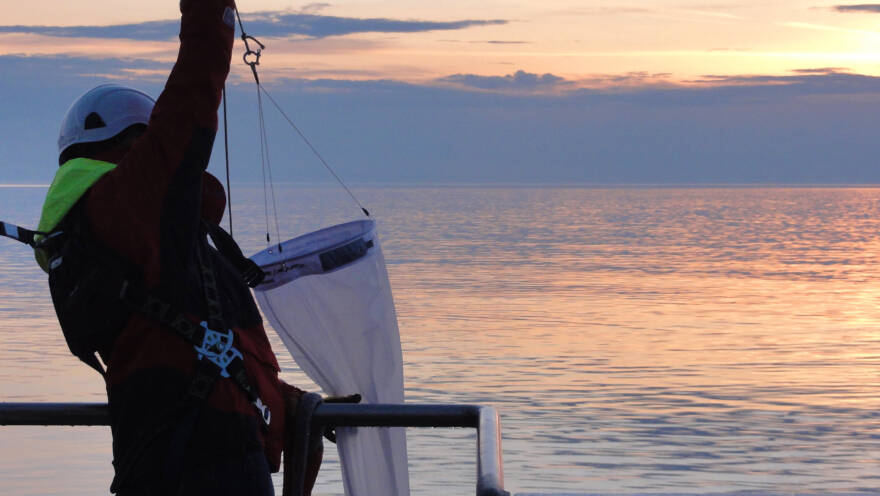 Find out more
Find out moreAranda and Geomari
-
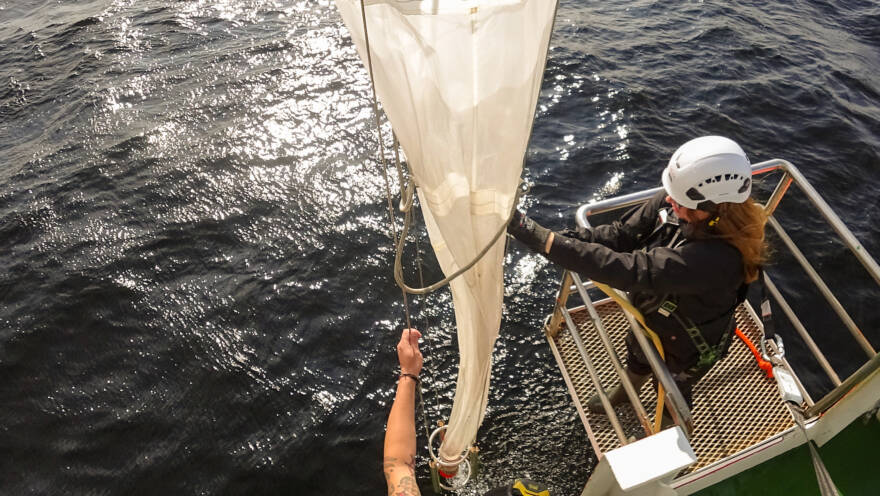 Find out more
Find out moreField work at sea

